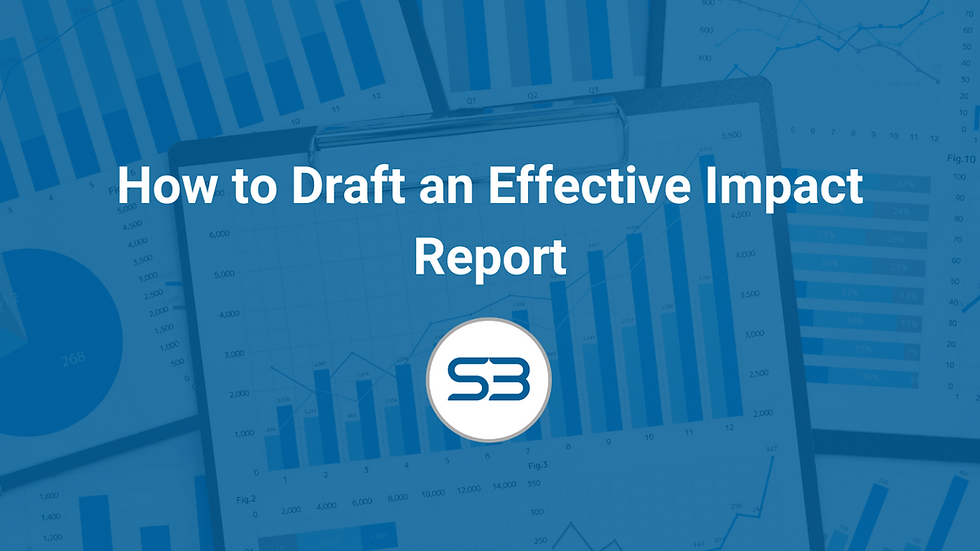How to Implement a Fundraising Strategy in 5 Steps
- S3 Solutions

- Jan 10
- 4 min read

Implementing a fundraising strategy requires great planning and determination. It’s not enough just to hope or assume that people will give to a good cause. Without an in-depth understanding of your needs, limitations and aspirations - you cannot expect to fundraise to the best of your ability.
There are many aspects to consider - from why you want to raise funds in the first place, to who you want to scout for financial support. In this blog, we’ll show how you can develop an effective fundraising strategy in 5 simple steps.
Step 1: Define Your Goal
Developing a goal is the most important element of your fundraising strategy. It should represent the amount of money you aim to raise by the end of the campaign. Or, your goal could even relate to how many donors you want to secure. Whatever figure you choose, these will act as a constant motivation, to make sure you succeed in keeping in line with your overall strategy.
You can determine your fundraising goal by:
Conducting a feasibility study where you communicate with key stakeholders and major donors to get a sense of how realistic your goal is
Analysing past fundraising efforts where you assess how much you have raised historically, this will help you determine how achievable your goals are

Step 2: Conduct a Strategic Analysis
The next step is identifying where you are, what resources you have at your disposal, where you want to go and how you plan to get there. You have to ask yourself a series of questions in order to achieve this:
Where are you now?
This will relate to who your current supporters are and how you enticed them, as well as what previous fundraising efforts have been successful. You essentially have to assess what has worked and what hasn’t. This will help you map out what to try as well as what to avoid.
Where do you want to be?
What do you want your fundraising to help you achieve? In most cases, a nonprofit will want to maximise awareness as well as donations. What fundraising ideas will appeal to people, so you can spread the good word about your nonprofit and therefore boost funds?
A SWOT analysis will also aid you in learning more about your wider environment and how this can impact your future fundraising outputs. It’s a research tool where you consider your strengths, weaknesses, opportunities and threats.
How much can you afford to spend?
How much can you allocate and invest in your fundraising efforts? This needs to include both time and money. It’s important to not feel discouraged - fundraising does not need to be expensive. Have a conversation with your team or a professional consultant to determine your maximum and minimum spend, and what’s achievable in these realms.
How long do you have to raise funds?
Do you have a projected deadline for the campaign? Remember, you will need to account for time you need to spend building relationships with donors, which often is a long-term tactic. For example, if your target is £50,000 over the course of six months, then trying to reach donors that you don’t currently have a relationship with will be challenging.
By answering these questions, you can accurately plan a strategy that’s well-informed and destined for success.

Step 3: Plan Your Fundraising Campaign
Once you define your goals and analyse your current and future situation, you can begin outlining your plan of action.
When you plan your campaign, think about how you can promote it as well as execute it. Social media is an effective, free tool that nonprofits can use at their disposal. Obviously, if your budget is high, you can consider other ways to spread the word about your campaign and cause. This could be through celebrity endorsements, local influencer activity, or even outdoor ads.
But before you can promote anything, you have to first cement what your fundraising activities will be. Depending on budget allocation, some fundraising activities may include:
Social fundraising such as peer-to-peer campaigns and crowdfunding
Community fundraising events like walkathons and auctions
Major donor cultivation events
Corporate partnerships
Every activity you plan to carry out should be marked on a calendar so that you avoid any unwanted overlap. This will also help you better organise donor interactions as well as keep you accountable and on track.
Your action plan should clearly state:
The role of staff members and volunteers involved
An estimated cost of each activity
A goal that determines each activity’s success
From here, you can begin to reach out to donors to inform them of your plans, as well as persuade them to support your fundraising endeavours.
Step 5: Do Donor Outreach
A solid fundraising strategy will identify specific revenue sources to pursue. These are known as donor prospects. These may include:
Individual donors
Foundations
Corporations
Decide early which leads are worth pursuing. Then, determine what tactics you will use to entice each prospect. You can do this by conducting research on your possible donors to identify their capacity. A professional consultancy can help you assess wealth indicators, demographic data and donor history to ensure you are as prepared as possible before you initiate contact.
Every charity needs a bespoke approach to meet its specific strategic and financial goals. Speak to S3 Solutions today to find out more about how we can help to grow your organisation.
.png)







Goede tips! Ben je op zoek naar de beste crowdfunding platforms? Bekijk dan onze blog over de Top 10 Crowdfunding Platforms in Nederland voor elk soort project.
https://whydonate.com/nl/blog/top10-crowdfunding-platformen-nederland/